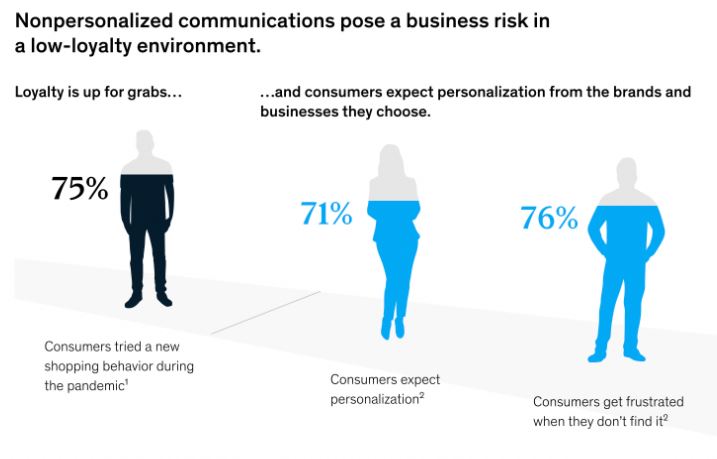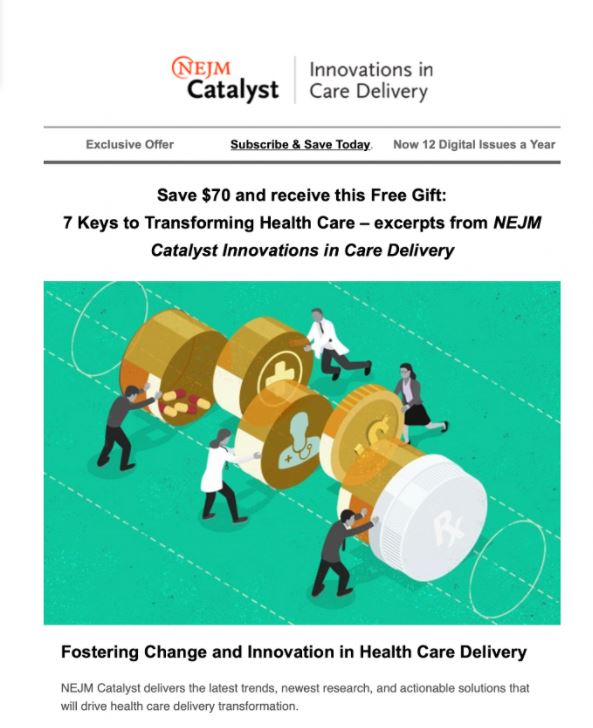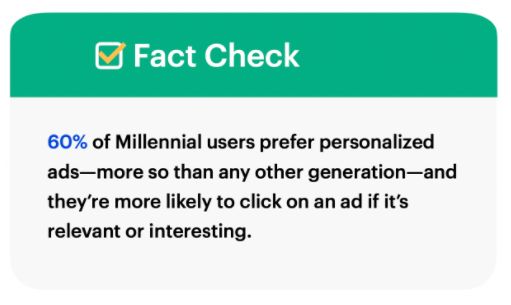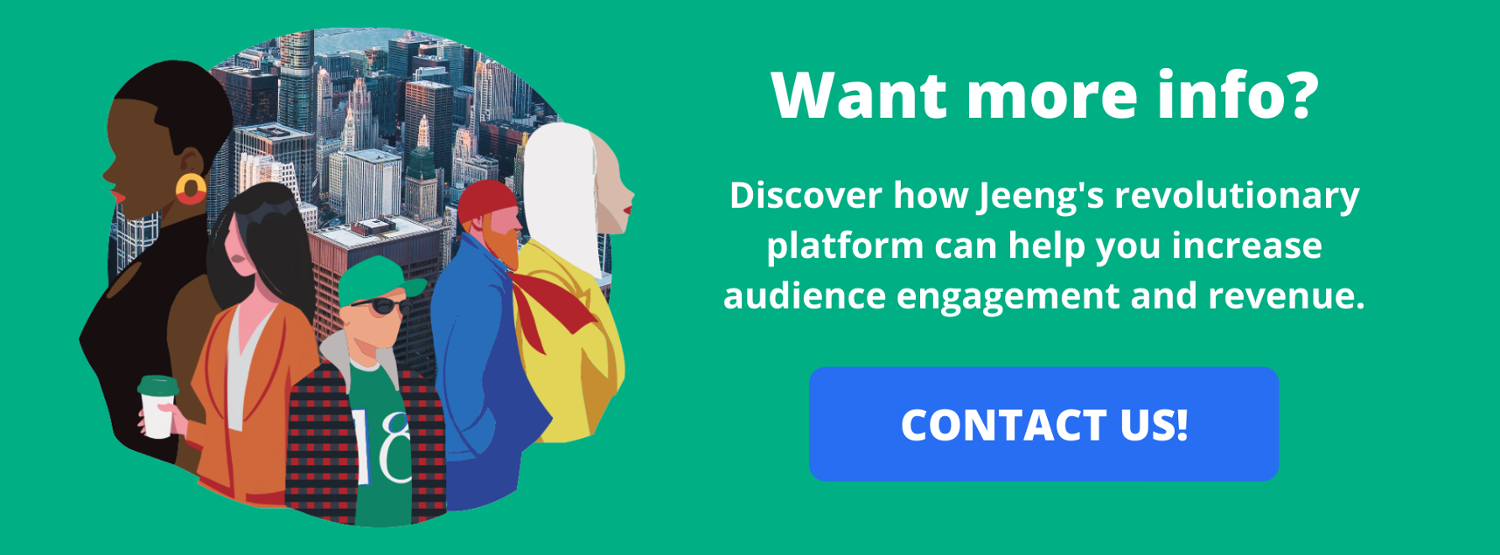Heading into 2022, personalization isn’t just an add-on bonus for publishers. It’s now a make-or-break strategy for retaining customers and subscribers, engaging new audiences, and future-proofing your business.
As McKinsey & Company reported, 71% of consumers expect personalized experiences from companies and 76% get frustrated when they don’t receive them. Meanwhile companies that grow quickly drive 40% more of their revenue from personalization compared to those that grow at a slower rate.

Especially now that third-party cookies are going away and publishers are beefing up their first-party customer data strategies, they have a major opportunity to revamp the way they personalize content, ads, and multiplatform experiences.

The question remains: What does successful personalized messaging actually entail, why is it so important, and how can publishers deliver that personalization across channels to improve customer retention and engagement?
Well, that’s exactly what this guide is for.
Let’s dive in.
What is personalized messaging?
Personalized messaging is organic or paid content that’s created specifically for certain readers and audience segments — reaching them with relevant information in the right place at the right time.
For example, personalized messaging might take into account different customer data categories like:
- Demographics (age, location, gender, employment)
- Behaviors (interests, favorite content types and formats, preferred channels)
- Direct feedback (surveys, call centers, website forms)
A news publisher, for instance, might launch personalized emails to loyal readers containing exclusive offers to subscribe to top-tier memberships, enjoy new premium content, or invite friends and colleagues to sign up at a discount. This, of course, goes beyond just using a custom field in the subject line, like “Hey, {First name}!” It involves tailoring the entire newsletter experience to the needs and interests of this audience segment.

Meanwhile a tech publisher might deliver personalized push notifications to readers that include relevant offers from tech retailers looking to reach these built-in, engaged audiences. And they’ll be sure to deliver those notifications across different time zones, getting in front of global users when they’re active and already consuming their favorite content.
How does personalized messaging benefit audiences?
Personalized messaging doesn’t just help publishers generate engagement, revenue, and loyal customer relationships. It also keeps readers and subscribers happy by:
- Providing them with relevant and engaging content that’s tailored to their interests
- Ex: A reader interested in investments can sign up for a news publisher’s stock market roundup for weekly highlights in their inbox.
- Increasing trust, which is in short supply these days with growing concerns about data privacy, fake news, and misinformation across the web.
- Ex: A publisher can provide a sign-up page with clear, transparent guidelines about how the reader’s information will be used to provide valuable, customized content.
- Delivering loyalty perks and rewards programs as part of membership packages.
- Ex: A fashion publisher can invite loyal readers to access exclusive content like livestream Q&As, product launches and demonstrations, and virtual events with fashion insiders.
What are personalized messaging best practices?
Personalization is complex but it doesn’t have to be overwhelming. To get started with gathering information from your customers and launching more personalized experiences, use best practices like:
- Creating unique audience segments with first-party data. Collect first-party data like email addresses to start learning what your readers are interested in and how you can deliver it to them. You can then use those emails to launch surveys and gather feedback, distribute personalized newsletters, and build target audience profiles.
- Building an intuitive preference center. Preference centers are essentially landing pages that readers can use to opt into the exact types of content they want, such as emails, browser push notifications, and mobile alerts. These preference centers are breeding grounds for first-party data — that is, high-quality information gathered directly from your customers.
- Automating data collection with the right algorithm. An algorithm powered by artificial intelligence and machine learning can take the headache out of the personalization process — saving you time and resources, and automatically finding opportunities to drive engagement and revenue. More specifically, an algorithm-based platform can sift through your customer data, curate your existing content for each individual, and send out relevant messaging at just the right moment.
- Delivering personalized ads to drive revenue. Personalization isn’t just important for organic content. It’s also crucial when creating paid messaging and partnering with brands to build ad placements. A publisher with a weekly or daily email newsletter, for example, can programmatically sell ad inventory to relevant buyers, offering access to a built-in, engaged audience of readers. As we found in our 2021 Digital Publishing Consumer Survey, nearly 3 out of 4 millennials and Gen Z consumers would rather see ads and get free content than pay for it. Also, 65% of Gen Z and 75% of millennials say they’re willing to click on ads if they trust the publisher.

How can you launch personalized messaging?
Your readers deserve to enjoy personalized experiences across channels — you just need the data and tools to help you deliver those experiences.
That’s where Jeeng comes in.
Jeeng is built to help publishers launch personalized content at scale, so they can nurture audience relationships, open up new revenue streams, and make the most of their most valuable resource: their customer data.
The best part?
All it takes is one line of code — then Jeeng’s powerful AI will automatically begin learning about your audiences, building segments, and launching relevant content across high-engagement channels like email, push notifications, and news reader apps.
Trust us, your audiences will thank you.
Ready to deliver personalized experiences that win over your audiences? Contact us to get started.


